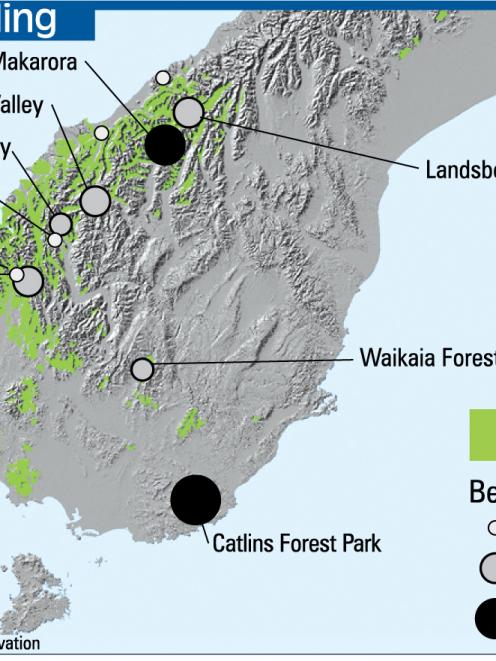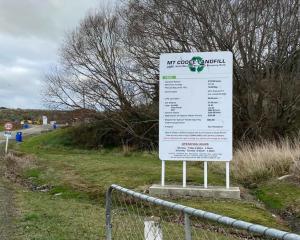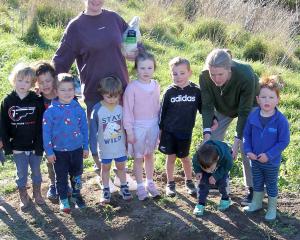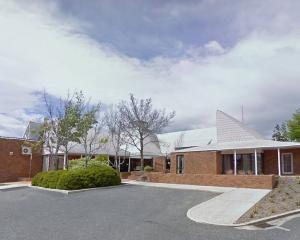In Otago, the Catlins Forest Park and Makarora in Mt Aspiring National Park have recorded some of the heaviest seed drops.
During the past two months, seed on beech trees has been measured at 23 sites from Nelson to Fiordland by shooting branches from trees to get an early indication of likely autumn seed fall.
Department of Conservation scientist Graeme Elliot said results confirmed the mast was widespread, as initially predicted from extensive spring flowering.
It was looking like a 10- to 20-year event, he said.
''[It] looks set to fuel an explosion in forest predators like rats and stoats in a large number of places.''

These forests were home to many native species, including mohua, kaka, robins, short and long-tailed bats, rock wrens, kiwi, kakariki and kea.
He estimated in a moderate to heavy beech mast there were about 50,000,000 beech seeds per ha or 5000 seeds per square metre on the ground. ''That's about 200kg per hectare.''
At the Catlins (classified as ''heavy''), the average number of seed pods was 31.4, while the Iris Burn (recording between ''moderate'' and ''light'') was 9.9.
Field teams would be closely monitoring rat and stoat populations during the next few months for early signs of rising numbers.
Doc, in consultation with communities, would then decide what action would be needed, with $11 million in funding allocated through the Battle for our Birds programme to deal with effects of this year's beech mast.
Control measures would include aerial 1080 drops and ground-based pest-control operations in multiple areas around the South Island.












